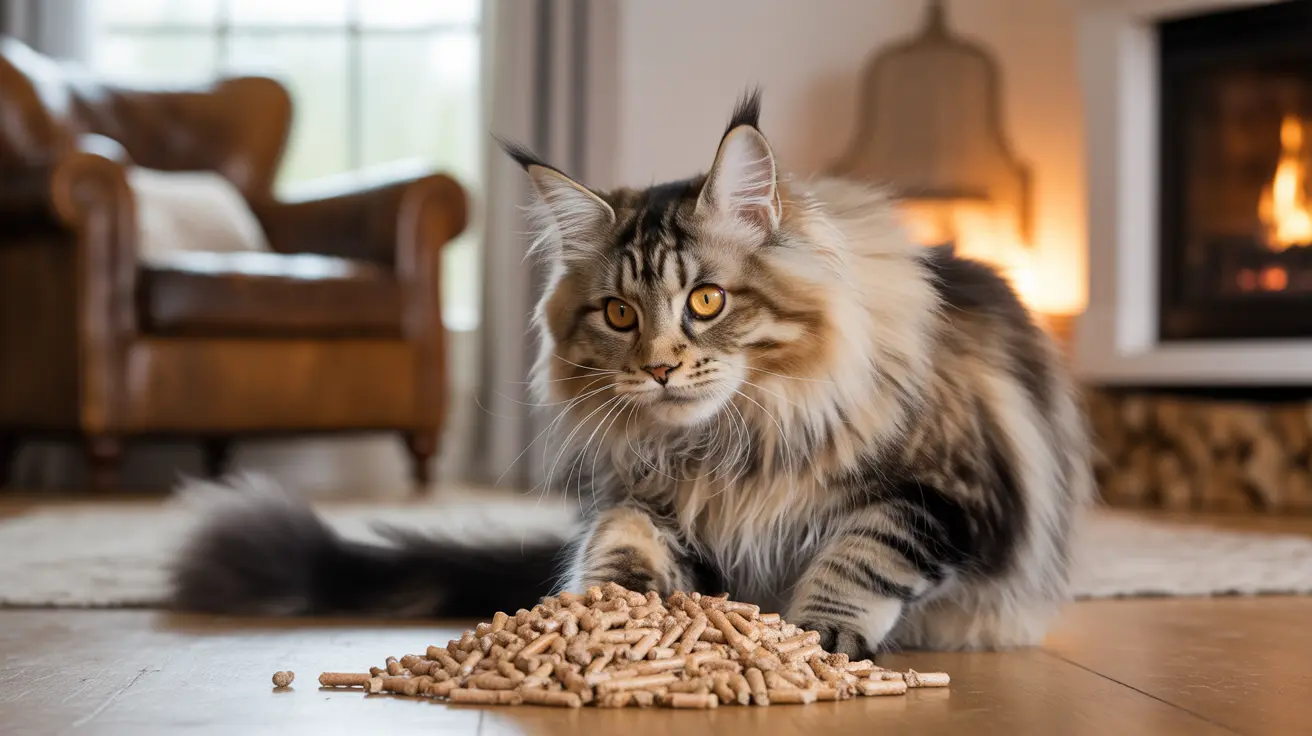As more cat owners seek sustainable and health-conscious solutions for their pets, cat litter alternatives have become increasingly popular. Traditional clay litter, while effective, comes with environmental concerns and potential health risks. This comprehensive guide explores the various natural and eco-friendly alternatives available, helping you make an informed decision for your feline friend.
Whether you're concerned about your cat's health, environmental impact, or simply looking for a more cost-effective solution, understanding the range of cat litter alternatives can revolutionize your pet care routine. Let's dive into the most popular options and their unique benefits.
Natural and Plant-Based Alternatives
Pine Pellets
Pine pellets represent one of the most popular natural alternatives to traditional cat litter. Made from compressed sawdust, these pellets offer excellent absorption and natural odor control through the wood's natural properties. They're particularly appealing because they're biodegradable and produce minimal dust.
When wet, pine pellets break down into sawdust, making it easy to identify areas that need cleaning. However, some cats may need time to adjust to the different texture and scent.
Paper-Based Options
Recycled paper litter, available in pellet or granule form, offers a gentle solution for sensitive paws. This option is particularly beneficial for cats recovering from surgery or those with respiratory sensitivities. The paper-based alternative is virtually dust-free and completely biodegradable.
Innovative Plant Materials
Several other plant-based options have emerged in recent years:
- Corn-based litter: Biodegradable and naturally clumping
- Wheat litter: Offers natural enzymes for odor control
- Grass seed litter: Lightweight and highly absorbent
- Walnut shell litter: Natural clumping properties
Modern Synthetic Alternatives
Crystal Silica Gel
While not strictly natural, crystal silica gel offers superior moisture absorption and odor control. These crystals can last longer than traditional litter, though they come at a higher initial cost. They're particularly effective in maintaining a dry, odor-free litter box environment.
Transitioning to Alternative Litters
Success with any new litter type depends largely on proper introduction. Start by mixing a small amount of the new litter with your cat's current litter, gradually increasing the proportion over 1-2 weeks. This slow transition helps prevent litter box aversion and ensures your cat accepts the new material.
Cost and Environmental Considerations
While many alternative litters cost more upfront than traditional clay litter, they often prove more economical over time due to better absorption and longer-lasting properties. Additionally, their biodegradable nature significantly reduces environmental impact compared to strip-mined clay litter.
Frequently Asked Questions
What are the most effective and eco-friendly cat litter alternatives to traditional clay litter?
The most effective eco-friendly alternatives include pine pellets, recycled paper, and corn-based litters. Pine pellets offer excellent odor control and absorption, while paper-based options are ideal for sensitive cats. Corn-based litters provide good clumping ability while remaining biodegradable.
How do natural cat litters like pine, paper, and tofu compare in odor control and absorbency?
Pine typically offers the best natural odor control, while paper excels in absorption but requires more frequent changes. Tofu-based litters provide a balance of both properties but may be more expensive.
Are biodegradable cat litters safe and healthy for cats with allergies or respiratory issues?
Yes, most biodegradable litters are safer for cats with sensitivities because they produce less dust and contain fewer artificial additives. Paper-based and pine pellets are particularly well-suited for cats with respiratory issues.
How can I transition my cat gradually to a new type of natural cat litter without causing aversion?
Mix small amounts of the new litter with the current litter, gradually increasing the proportion over 1-2 weeks. Maintain the same litter box location and cleaning routine during the transition.
What are the environmental benefits and disposal recommendations for using plant-based or recycled cat litters?
Plant-based and recycled litters are biodegradable, reducing landfill impact. Many can be composted (excluding feces) or will naturally break down when disposed of. Always check local regulations for proper disposal methods.
Conclusion
Cat litter alternatives offer numerous benefits for both pets and the environment. While the initial transition may require patience, the long-term advantages of using natural, sustainable options often outweigh any temporary inconvenience. Consider your cat's preferences and health needs when selecting an alternative, and remember that successful adoption often depends on a gradual transition process.






